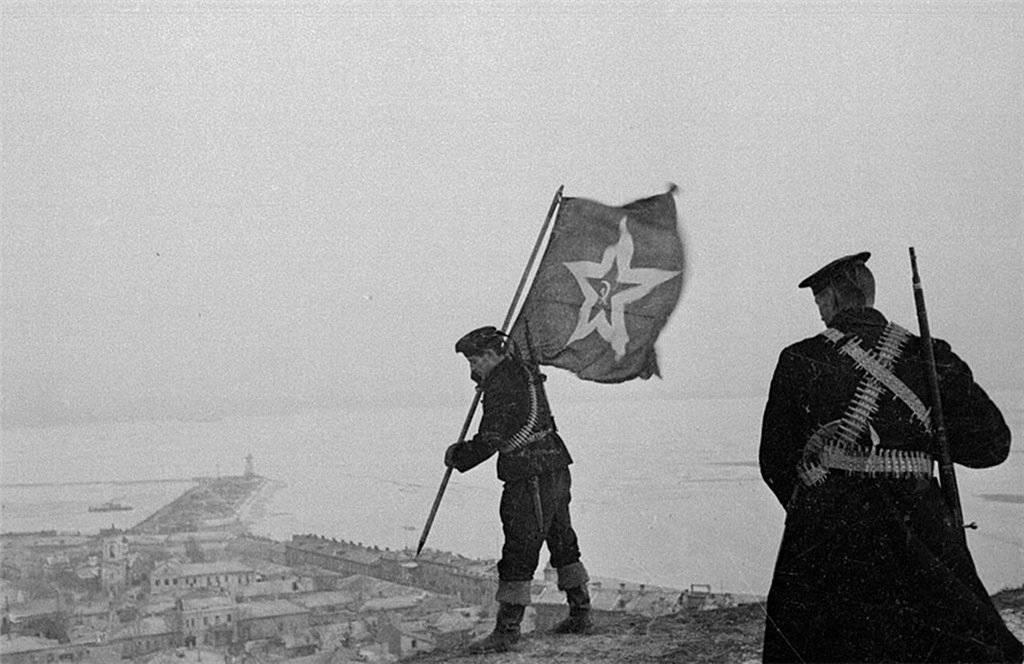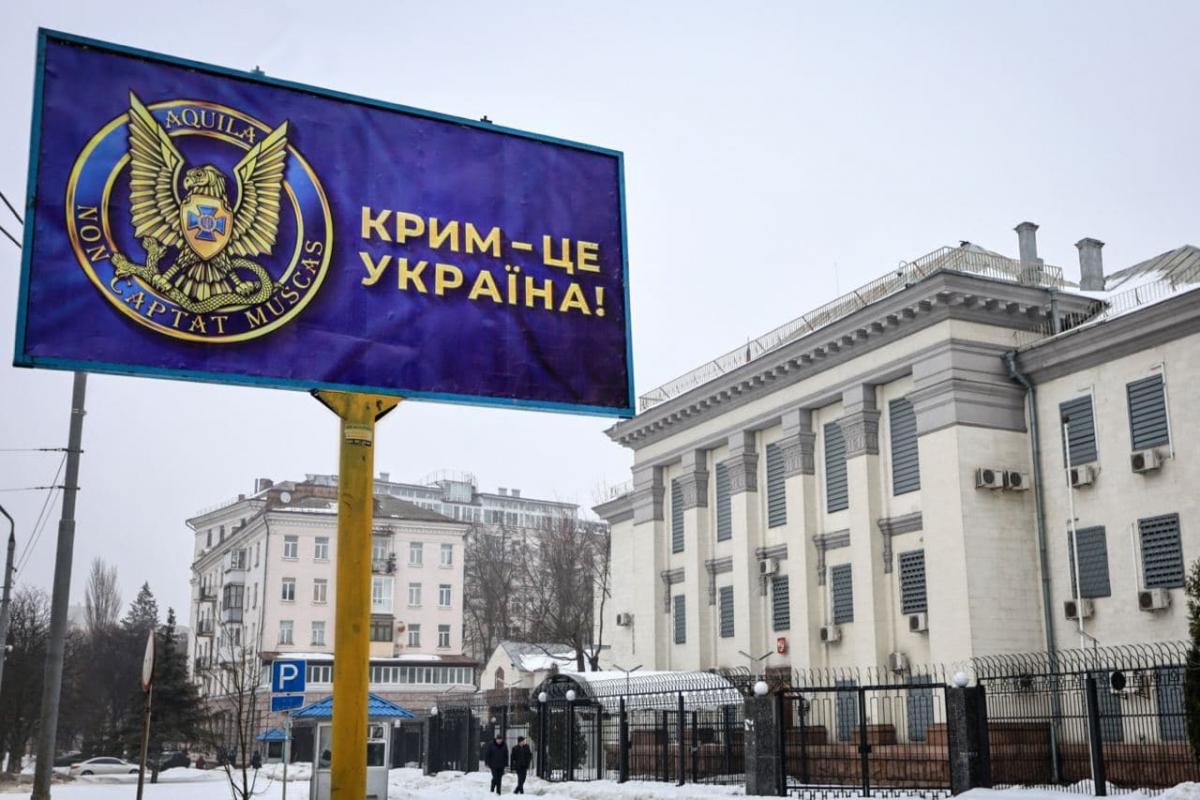1/ CONQUERING CRIMEA: PART 5
In this fifth and penultimate part of a short series of threads on the military history of Crimea, I'll cover the most recent invasion of Crimea – the 1943-44 Soviet reconquest of the peninsula, which had been conquered by Nazi Germany in 1941-42.
In this fifth and penultimate part of a short series of threads on the military history of Crimea, I'll cover the most recent invasion of Crimea – the 1943-44 Soviet reconquest of the peninsula, which had been conquered by Nazi Germany in 1941-42.

2/ In the first part, I looked at Crimea's military significance, its unique geography and the difficulties it presents for invaders – as well as the defensive advantages it holds for its occupiers.
https://twitter.com/ChrisO_wiki/status/1640428287200509961
3/ In the second part, I reviewed Crimea's history of invasions from the 17th to the 19th centuries, including the initial Russian conquest of Crimea in the 18th century.
https://twitter.com/ChrisO_wiki/status/1641172285967982594
4/ In the third part, I looked at the battles for Crimea in 1918 and 1920 during the Russian Civil War, when Bolsheviks, the anti-Bolshevik White movement, the short-lived Ukrainian People's Republic and Imperial Germany competed to control the peninsula.
https://twitter.com/ChrisO_wiki/status/1641895074001834002
5/ The fourth part covered Nazi Germany's immensely bloody 1941-42 invasion of Crimea. Over 500,000 Soviet soldiers became casualties along with at least 115,000 Axis troops during 10 months of bitter fighting including the eight-month siege of Sevastopol.
https://twitter.com/ChrisO_wiki/status/1645516747129192448
6/ The Germans invaded Crimea in 1941 with the intention of using it as a stepping-stone to the Caucasian oilfields. They managed to cross the Kerch Strait to invade the Soviet-held Taman Peninsula, but eventually had to retreat in the face of strong Soviet resistance. 

7/ Following the Battle of Kursk in the summer of 1943, the Soviets launched the massive Battle of the Dnieper in August-December 1943. They pushed German-led forces out of eastern Ukraine, recaptured Kyiv and isolated the Axis-held Crimean peninsula. 

8/ Crimea was occupied by around 200,000 Axis military personnel, but only around 40,000 were combat troops. Two German and seven Romanian divisions of varying quality were stationed in the peninsula, along with an assortment of volunteer Slovaks, Azerbaijanis and Georgians. 

9/ The Axis forces faced over 460,000 Soviet troops, who had nearly 6,000 artillery pieces and 559 tanks. The Germans positioned what forces they could at the Perekop isthmus in the north-west, the Chonhar peninsula in the north centre and the Arabat Spit in the north-east. 

10/ However, they neglected to guard the shore of the Syvash lagoons north of Crimea. Soldiers of the Soviet 10th Rifle Corps took advantage, identifying a spot where they could cross a 2.5 km (1.5 mi) wide stretch which was only ankle deep due to wind and tidal conditions. 

11/ The Soviets established a bridgehead on the Crimean mainland, bringing a few heavy weapons across the Syvash by sliding them over the mud in flat-bottomed boats. They were able to use this bridgehead to begin work on a pontoon bridge across the lagoon. 

12/ On 1 November 1943, Soviet armoured units arrived at the Perekop isthmus and promptly attacked. It was only weakly defended – minefields were not yet in place and the Slovak unit holding a central position retreated without blowing the bridges across the ancient Tatar Ditch. 

13/ The Soviets advanced over a kilometer before being stopped at Armyansk. They established a deep salient that German counter-attacks were unable to push back. The front line in Crimea's north-west subsequently froze in place – literally – for the next five months.
14/ The Soviet troops on the Syvash shoreline faced appalling winter conditions, unable to dig trenches or find fresh water because the ground was so saturated with brine. As Major-General Pyotr Koshevoy later wrote, "There was not a tree or bush... 

15/ "Around us stretched a boundless steppe as flat as a table and a drained white expanse of shallow salt lakes. There were not even any weeds visible. Only here and there was a sparse tuft of reddish-gray sage. We could see all the way to the horizon.
16/ "It seemed that the troops were completely open to enemy observation and fire. To the south of our front line the enemy was located on ancient Scythian burial mounds ... and our scouts have repeatedly noticed the gleaming glass of binoculars." 

17/ At the same time, the Soviets launched an amphibious invasion of Crimea's eastern Kerch Peninsula at Kerch and Eltigen. Although a bridgehead was established successfully east of Kerch, the attack at Eltigen was a costly failure. Nonetheless, it set up a new Soviet offensive. 



18/ Both sides spent the winter digging in at Perekop. The Soviets dug trenches to narrow the distance between them and the Germans from about 1 km to as little as 150 m. The Germans dug their own trenches, planted mines and emplaced barbed wire across the peninsula. 

19/ The Axis defences comprised three lines, the first around the Soviet salient at Perekop/Armyansk, and the second and third – manned by Romanian troops – at Ishun 20 km to the south-east. By this time the Soviets had overwhelming air and artillery superiority.
20/ The Red Army attacked at 08:00 on 8 April 1944, with a massive artillery bombardment accompanied by the Soviet Air Force heavily bombing and strafing the defenders. Rather than relying solely on mass, the Soviets used smoke to conceal their advancing infantry. 

21/ Soviet flamethrower tanks were also employed to burn out Axis machine-gun and anti-tank positions. Constant waves of Sturmovik ground attack aircraft hit exposed targets across the isthmus and pushed the defenders back towards Ishun during 8-9 April. 

22/ On 10 April, the Soviets carried out an amphibious landing between Perekop and Ishun that the Germans were unable to repel. This convinced the Germans to abandon Perekop and retreat to Ishun, suffering heavy losses of personnel and equipment.
23/ However, the lines at Ishun were now severely endangered by a simultaneous Soviet advance from their positions to the north on the Syvash shoreline. Soviet engineers had built two pontoon bridges across the Syvash, allowing heavy weapons and tanks to advance. 

24/ In eastern Crimea, Soviet armies advanced from their bridgehead near Kerch to retake the Kerch Peninsula. It was clear by now to the Germans that the battle was lost. They ordered their forces to retreat to Sevastopol, abandoning the defences at Ishun and Chonhar. 

25/ The Soviets rapidly advanced across Crimea, retaking all of its principal towns apart from Sevastopol, where the Germans and Romanians were attempting to evacuate as quickly as possible. By 4 May, only 64,000 Axis troops were left in Crimea, against 400,000 Soviets. 

26/ The Germans and Romanians were in no position to defend Sevastopol for long. There was no second siege. Constant Soviet attacks pushed back the Axis forces into a shrinking perimeter on the Chersonese Peninsula west of Sevastopol, from where many were evacuated.
27/ The last Axis troops in Crimea were overrun on 13 May. In a month of fighting, the Soviets had retaken the whole of Crimea at the cost of 84,819 casualties, including 17,754 dead or missing. Axis casualties were far higher at 96,000, including 57,500 dead or missing. 

28/ Four years of fighting in Crimea had resulted in around 700,000 Soviet casualties and over 250,000 Axis casualties. At least 60,000 Germans and 15,000 Romanians were dead or missing – a loss that Germany and Romania could ill afford and for little strategic benefit.
29/ Following the reconquest, Stalin had the entire Crimean Tatar population – nearly 200,000 people – deported to Uzbekistan or Gulag labour camps, accused of collaboration with the Germans. More than half died within 3 years. The survivors were not allowed home until the 1980s.
30/ Crimea was systematically Russified after the war. The deserted Tatar towns and villages were given Russian names and ethnic Russian settlers were moved in, but the peninsula stayed poor and undeveloped until after Khrushchev transferred it to Ukrainian control in the 1950s. 

31/ In the next and final part of this thread series, I'll review the lessons learned from the various invasions of Crimea and consider the challenges that Ukraine might face if it wants to retake the peninsula by force.
32/ (Note: The battle map in post #12 of this thread is from Robert Forczyk’s excellent book, “Where the Iron Crosses Grow: The Crimea 1941-44” – I can highly recommend it.) /end
• • •
Missing some Tweet in this thread? You can try to
force a refresh

 Read on Twitter
Read on Twitter







